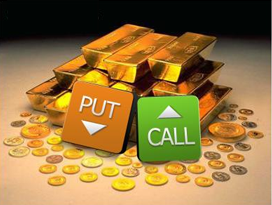
There are many ways for gold traders to make a profit in good and bad economic times. But as everyone knows, recessions, political crises, and other global problems are usually a time when the price of the most-favored metal rises considerably. Why? Because human beings seek security and comfort. When stocks, currencies, bonds, and other paper assets begin to suffer, wise investors seek out something solid, something that has held its value even when the global economy has imploded. That something is gold. Consider that whenever the stock market beings to tank, when the U.S. dollar’s value decreases, or when there are widespread crises like Brexit, COVID, or wars, the price of gold tends to rise. Later on, when the bad times pass, gold’s value reverts back to a holding pattern, as if it’s just waiting for the next round of negative headlines.
How can ordinary investors take advantage of the ups and down’s in the international market for the yellow metal? There are strategies that can work for virtually anyone who has a bit of patience. In most cases, the key thing to remember is that news, particularly economic reports, can have a significant impact the per-ounce value of all precious metals. Even if you’re not a news hound, it pays to keep a close eye on government announcements, international trade headlines, and political happenings, all of which can push the price of gold up or down rather quickly. Consider using one of more of the following techniques to take advantage of the ever-changing value of bullion.
Diversity Among the Precious Metals
Some of the PMs have their own behavior patterns. That’s why many investors diversity their metallic holdings by adding silver, platinum, and palladium. Often, when one of the more popular PMs rises, the others fall, which makes for a nice diversification strategy for those who want to maintain a mostly-metal portfolio. One of the big arguments in favor of silver, for example, is that it has both intrinsic and practical value built into its price. There’s a lot of industrial usage of silver that rises and falls with economic activity. Yet, it also serves as a safe haven for people who acquire it as a store of value during times of crisis.
Use CFDs for Easy Trading Execution
Contracts for difference, CFDs, are one of the more convenient ways to buy and sell gold. Investors don’t have to hold physical bullion or buy shares of mining stocks. Instead, the contract is simply a wager that the price of gold will rise or fall. If the trend moves in the way you predicted, you stand to turn a profit. You endure a loss if your prediction is incorrect. Many people prefer trading gold CFDs due to the ease of opening an online account, the very low minimums, the simplicity of the instrument, and the chance to make money on short-term moves.
Use Moving Average Crossovers for Long-Term Success
For anyone who enjoys using technical indicators, particularly moving averages, the entire PM market has plenty to offer. If you prefer to keep things simple, and are willing to hold your assets for months, perhaps years, keep an eye on the moving average crossovers. PM enthusiasts who base their strategies on averages often wait for the 50-day moving average line to cross upward across the 200-day line. At that point they buy, often placing a stop-loss at some fixed point behind their gains.
But averages aren’t just for the buy and hold crowd. Swing and position traders use averages to time entry and exit points. One popular method among metals investors is using the 20-day average as a measure of the short-term trend. When price moves above that line, it’s often a good time for a buy. A move, especially a close, below the 20-day line is a signal to get out of a position. In many ways, the 20-day average delineates the short-term trend for stocks, bonds, and metals. The 50-day line does the same for the medium-term trend, and the 200-day average marks the long-term trend.
Play the Annual Averages
Some yellow metal enthusiasts favor playing the annual averages. For decades, gold has had its best months in January, February, September (best of all), and November. In fact, since 2015, if you bought the yellow PM on January 1 and held it for a month, you would have made a nice profit every single year. There’s something to be said about these monthly rises, particular September’s. The global jewelry market has a lot to do with it, but the fact remains that all the PMs go through annual cycles and have their good months.
 SU
SU REDDIT
REDDIT







